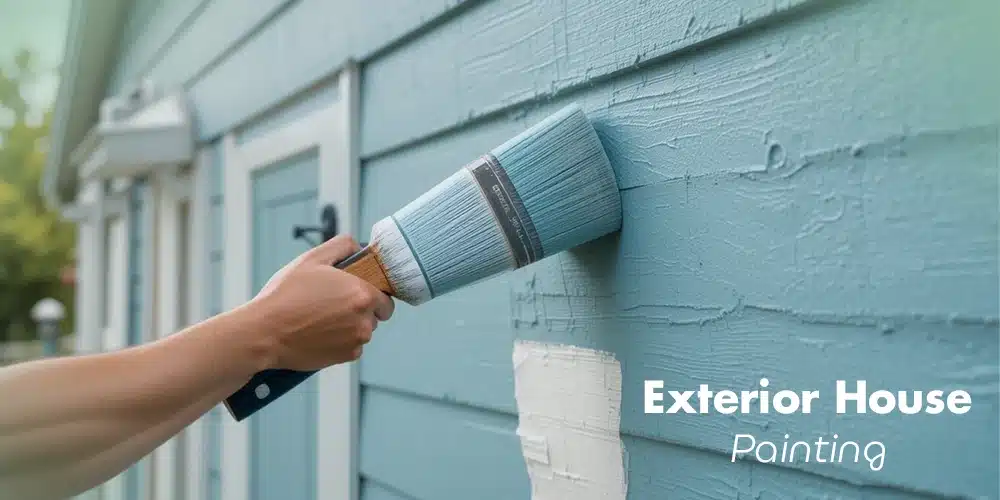Adding curb appeal to your home can be challenging when weather impacts exterior painting. Humidity, temperatures and daily weather can impact various aspects of your paint job and need to be considered soon after you choose your paint colors.
Thankfully, there are things you can do to ensure a quality exterior paint job regardless of the climate you live in. Read on to learn how weather impacts exterior painting and tips to ensure a professional job no matter the conditions. Regardless of your climate, be sure to follow the paint manufacturer’s recommendations.
Humidity
Homes in humid climates face numerous challenges when it comes to exterior painting. High humidity means there is more moisture in the air, which can slow down drying time in between coats, cause adhesion issues and create mold and mildew issues that need to be treated before painting can begin. These issues lead to longer wait times in between coats and can extend your job timeline.
There are many ways to combat humidity and still guarantee a professional paint job. Ensuring the home exterior is clean and dry before painting is critical. You may want to do power washing ahead of your paint job to ensure your home exterior is clean. Use high quality paint made to handle higher humidity levels. Also, start painting early in the morning or late afternoon, when humidity is at its lowest levels. Taking these precautions before you begin painting will help you have a successful and long lasting paint job you will enjoy for years to come.
Hot Temperatures
While humidity can slow down paint drying time, hot temperatures will speed it up. At first, this may seem like a benefit. However, accelerated paint drying can lead to problems such as uneven finishes, visible streaks and adhesion problems that reduce durability.
Keeping things cool is important for exterior painting in hot temperatures. This includes painting and cooler times of the day, storing paint in a cool area to protect it from overheating and painting in the shade or using shade screens to protect it from direct sunlight. You can also thin the paint by adding a little water or paint conditioner to extend drying time and add consistency.
Cold Temperatures
Similar to humidity, cold temperatures slow down drying times for exterior painting. Colder temperatures make paint thicker and more challenging to apply and unable to bond properly to the surface, resulting in peeling and flaking. Freezing temperatures can cause paint to become brittle and crack and impact its quality if not properly stored.
Using paint made for colder temperatures will be essential for your exterior paint job. You will also need to have longer dry time in between coats, paint in the warmest part of the day and add a paint conditioner to improve its flow and consistency. To protect your new paint job from freezing temperatures, cover surfaces with drop cloths or plastic sheets.
Check Weather Updates
No matter the climate you live in, it’s important to check the weather before you begin your exterior paint project. This will help you determine the hottest and coldest times of the day, humidity levels, chance of rain and other factors that will impact your painting. Flexibility will be essential for painting because weather can be unpredictable. Be open to starting at different times of the day or on a different day based on the forecast.
Weather impacts exterior painting, but there are ways to ensure you still have a quality and professional job done. Aaron’s Painting and Remodeling is committed to providing exceptional and professional exterior painting services at a fair price. Contact us today for your free estimate.



